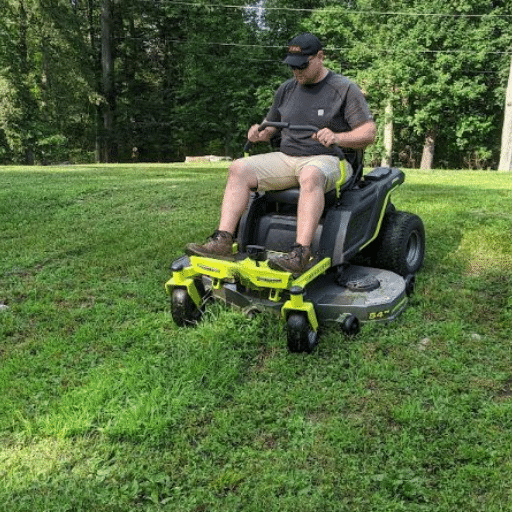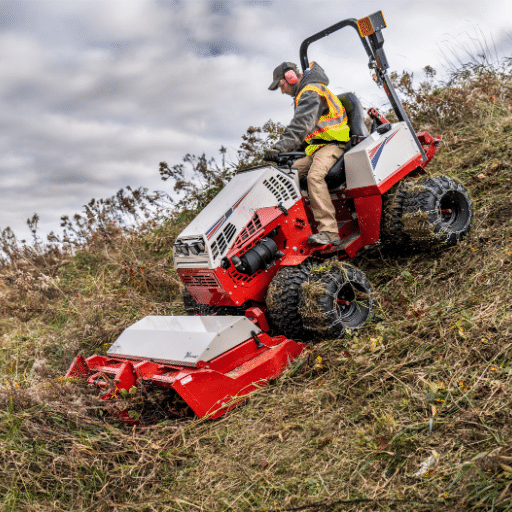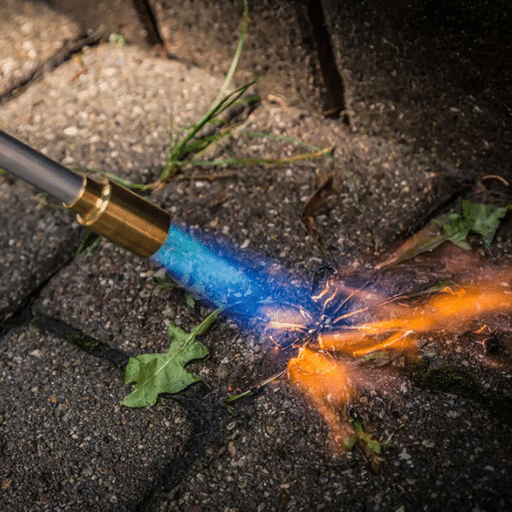Keeping a backyard in order is a demanding task, especially when weeds and brush seem determined to take over your property. For homeowners, gardeners, and landowners, having the right tools is essential for an efficient approach to these challenges.
The brush cutter stands out as a truly versatile and powerful instrument designed to tackle the entire spectrum of vegetation threats – from overgrown grass to thick undergrowth. With numerous options available in the market, selecting the right brush cutter can be challenging.
This comprehensive guide will take you through the best brush cutters available, comparing their features, performance, and value to give you the knowledge needed to make an informed choice. Whether you’re managing a small backyard or a massive piece of land, this article will arm you with the expertise to reclaim your outdoor spaces efficiently.
🏆 Top-Rated Brush Cutters on the Market

The Husqvarna 128LD is a dependable and versatile brush cutter perfect for small to medium-sized yards. This lightweight model features a detachable shaft for convenient transportation and is powered by a robust 28cc engine.
- Engine: 28cc 2-stroke
- Weight: Lightweight design
- Best For: Small to medium yards
- Key Features: Intuitive start-up, multiple attachment compatibility
This battery-operated brush cutter delivers virtually silent, emission-free operation. It features three speed settings, a powerful brushless motor, and excellent balance for precise handling.
- Power Source: 18V LXT® Dual Battery
- Motor: Brushless for extended life
- Speed Options: Three adjustable speeds
- Best For: Eco-conscious users with limited maintenance time
The Stihl FS 131 represents one of the finest gasoline-powered brush cutters for heavy-duty applications. Designed for extensive use, featuring a robust 36.3cc engine.
- Engine: 36.3cc professional-grade
- Handle: Ergonomic design to reduce fatigue
- Application: Large and dense vegetation areas
- Best For: Professional landscapers and heavy-duty clearing
This cordless powerhouse delivers lasting performance with exceptional cutting accuracy. The 60V FlexVolt system ensures extended runtime while maintaining lightweight portability.
- Battery: 60V FlexVolt system
- Design: Lightweight and ergonomic
- Performance: Extended runtime and power
- Best For: Homeowners seeking power and portability
🔧 Features and Benefits Comparison

| Model | Key Features | Primary Benefits | Best Application |
|---|---|---|---|
| Stihl FS 56 RC-E | • Quick-Start Technology • High Power-to-Weight Ratio • Lightweight Design |
• Reduced user fatigue • Low maintenance • High durability |
Medium-sized vegetation clearing |
| Husqvarna 336FR | • X-Torq® Engine • Professional Handle • Combo Guard System |
• Reduced fuel consumption • Lower emissions • Quick blade changes |
Professional heavy-duty work |
| Makita XRU15PT1 | • Dual 18V Battery • Three Speed Options • Auto Torque Drive |
• Quiet operation • Long working time • Residential-friendly |
Residential areas, noise-sensitive zones |
| Echo SRM-225 | • 21.2cc Engine • i-30™ Starting System • Ergonomic Design |
• 30% easier starting • Beginner-friendly • Reliable performance |
Mixed skill levels, grass and brush |
| DEWALT DCST972X1 | • 60V FlexVolt Battery • Dual Cutting Strings • Brushless Motor |
• Extended runtime • Wide cutting swath • Low maintenance |
Tough vegetation, eco-conscious users |
⭐ Customer Reviews and Ratings

DEWALT FlexVolt String Trimmer
Based on recent customer feedback
5-Star Reviews (72%)
- Exceptional battery life and cutting capability
- Smooth handling of thick weeds and dense vegetation
- Reliable performance for heavy-duty yard work
- Professional-grade power and durability
Areas for Improvement (28%)
- 4-Star (18%): Weight concerns during extended use
- 3-Star & Below (10%): Balance issues and occasional spool replacement difficulty
- Individual usage variations affect experience
🔍 Key Customer Insights:
- Durability: Highly positive long-term reliability ratings
- Compatibility: Seamless integration with other FlexVolt tools
- Eco-Appeal: Customers appreciate low noise and minimal maintenance vs. gas models
🛠️ Types of Brush Cutters
🤏 Handheld Brush Cutters
Most Popular Choice
- Lightweight and portable
- Ideal for small to medium areas
- Perfect for trimming grass, weeds, and light brush
- Easy maneuverability
🚶 Walk-Behind Brush Cutters
For Larger Areas
- Designed for bigger properties
- Larger, more powerful engines
- Better for thick brush and uneven terrain
- Reduced operator fatigue
🚜 Tow-Behind Brush Cutters
Commercial Scale
- Attach to tractors or ATVs
- Perfect for large tracts of land
- Used in fields, pastures, and overgrown areas
- Maximum efficiency for extensive clearing
Power Source Comparison
| Type | Advantages | Disadvantages | Best For |
|---|---|---|---|
| Electric/Cordless | • Quiet operation • Zero emissions • Low maintenance • Lightweight |
• Limited runtime • Less power than gas • Charging requirements |
Eco-conscious users, residential areas |
| Gas-Powered | • Maximum power • Extended operation • No charging needed • Heavy-duty capability |
• Heavier weight • Noise and emissions • Regular maintenance • Fuel costs |
Professional use, large properties, dense vegetation |
⚖️ Handheld Brush Cutters: Pros and Cons

✅ Advantages
- Precision Control: Perfect for intricate landscaping and tight spaces
- High Portability: Lightweight design enables easy maneuverability
- Cost-Effective: Generally less expensive than heavy-duty alternatives
- Versatile Attachments: Multiple heads for various cutting tasks
- Eco-Friendly Options: Battery models offer quiet, emission-free operation
❌ Limitations
- Limited Power: Struggles with dense or woody vegetation
- Small Coverage Area: Not practical for extensive properties
- Battery Constraints: 30-60 minutes of runtime requiring recharging
- User Fatigue: Extended use can cause operator exhaustion
- Noise Levels: Gas models require hearing protection
🚀 Gas vs. Electric: Performance Analysis
Decision Factors
- Large, Demanding Jobs: Gas models remain unmatched for power and endurance
- Convenience & Environment: Electric models offer modern solutions for eco-conscious users
- Residential Use: Battery-powered units are increasingly popular for regular maintenance
- Noise Restrictions: Electric models excel in residential and noise-sensitive areas
🔪 Brush Cutter Blades and Attachments
Blade Selection Guide
| Blade Type | Teeth Count | Best Application | Cutting Capability |
|---|---|---|---|
| Grass Blades | 2-3 teeth | Thick grass, light vegetation | Lawn maintenance, steady growth areas |
| Brush Blades | 8+ teeth | Heavy weeds, shrubs | Overgrown yards, tough vegetation |
| Saw Blades | Numerous small teeth | Small trees, woody materials | Dense woody growth, tree trimming |
| Carbide-Tipped | Variable | Hardwood, tough materials | Professional tree work, durability |
Versatile Attachments
- String Trimmer Heads: General trimming and edging
- Circular Brush Blades: Tough brush and thickets
- Hedge Trimmer Attachments: Shaped hedge maintenance
- Pole Saw Extensions: High branch cutting
- Brush Hog Attachments: Large area clearing
🎯 Choosing the Right Brush Cutter

Assessment Criteria
🏡 Small Gardens
Electric/Cordless Recommended
- Lightweight operation
- Quiet performance
- Adjustable handles
- 300-600 watts is sufficient
🌳 Large Properties
Gas-Powered Preferred
- 25-35cc engines
- Extended runtime
- Heavy-duty construction
- Professional attachments
🌲 Extreme Conditions
Commercial Grade
- 40cc+ engines
- Reinforced components
- Multi-attachment systems
- Professional warranties
Budget Planning
| Price Range | Type | Features | Best For |
|---|---|---|---|
| $100-$200 | Basic Electric | Simple cutting, lightweight | Light maintenance, small yards |
| $250-$400 | Mid-Range | Adjustable handles, multiple heads | Most residential applications |
| $500+ | Professional Grade | High power, commercial durability | Large properties, commercial use |
⚠️ Additional Cost Considerations:
- Electric Models: Battery replacement costs
- Gas Models: Fuel and maintenance expenses
- Universal: Blade replacement and attachment costs
- Warranty: Extended coverage value assessment
🔧 Maintenance and Care
📋 Maintenance Schedule
| Frequency | Task | Details |
|---|---|---|
| After Each Use | Clean and Inspect | Remove debris, check for damage |
| Every 5 Hours | Check Fasteners | Tighten screws and bolts |
| Every 10 Hours | Air Filter Service | Clean or replace the air filter |
| Every 20 Hours | Blade Sharpening | Maintain cutting efficiency |
| Every 25 Hours | Oil Change | Fresh oil for engine longevity |
| Every 50 Hours | Spark Plug | Inspect and replace if needed |
🏠 Storage Guidelines
- Location: Cool, dry place away from moisture
- Protection: Use protective covers
- Fuel: Drain for long-term storage
- Cleaning: Remove all debris and residue
- Blade Care: Apply protective coating
🚨 Common Issues and Solutions
| Problem | Possible Causes | Solutions |
|---|---|---|
| Engine Won’t Start | Stale fuel, worn spark plug, clogged carburetor | Replace fuel, clean/replace spark plug, service carburetor |
| Poor Cutting Performance | Dull blades, incorrect positioning | Sharpen blades, check alignment |
| Excessive Vibration | Loose parts, unbalanced blades | Tighten fasteners, balance or replace blades |
| Overheating | Blocked air vents, insufficient oil | Clear ventilation, check oil levels |
| Unusual Smoke | Overfilled oil, burning debris | Drain excess oil, clean engine area |
-
References
-
Ohio State University – Handheld Trimmers and Brush Cutters: Provides detailed insights into the uses and capabilities of handheld trimmers and brush cutters for small farms and gardens.
-
University of California Agriculture and Natural Resources – Cutting: String Trimmers / Brush Cutters: Explains the functionality and applications of string trimmers and brush cutters in vegetation management.
-
ScienceDirect – Analysis of Brush Cutter-Related Accidents: Discusses safety concerns and accident analysis related to brush cutter usage.
-
Utah State University Extension – The Brush Cutter: Highlights the efficiency and environmental benefits of brush cutters in forestry and vegetation management.
Frequently Asked Questions (FAQ)
What does one mean by a Brush Cutter Description and operation?
A brush cutter is an implement of design modification over the lawn mower in that it is equipped with reinforced blades capable of removing strong undergrowth, thickets, or bushes, as well as short trees. The implement deploys different rotating knives or edges to cut different vegetation, for instance, a circular brush blade and a steel brush, which can be attached as perks to the machine. Furthermore, it operates just like a lawn mower, but it is more appropriately used for clearing brush and vegetation, rather than vast fields of grass.
What brush cutter blades are recommended and why?
It is essential to note that the various brush cutter blades are dependent on the type of task to be carried out. The standard blade attachments are query head attachments with circular brush blades, which can be used for cutting thorny brush thickets, tresses, grass, and weeds, as well as blade covers to prevent cuts and injuries. To clear more space, for instance, a brush hog attachment is available. For more convenient use of manual or handheld brush cutters over a more extended period, a shoulder strap is also provided.
Which brush cutter best meets my needs?
Is it a question of knowing exactly how to use the brush cutter best for the purpose? If so, please take note of the following key suggestions. First, the user should begin with a simple orientation on how to hold the brush cutter. Hold it in such a way that the blade remains at right angles relative to the desired plane of sweeping the brush. Logical, is it not? Next, it is best to remove all enormous obstacles and move into small, selected areas to mow (草を刈る) while advancing the brush cutter. If chilling robust iron pipes, for example, is 2 inches thick, a higher force mode will be convenient to apply as it will increase the brush cutter’s efficiency. Remember to wear the appropriate protective equipment, including the blade guard, when operating the brush cutter, such as safety glasses.
What are the features of powerful cordless brush cutters?
Effective brush cutters, on the other hand, incorporate features that make work easier and more effective. The features typically incorporated include a lightweight structure and rechargeable batteries for cordless devices, allowing for easy use and portability. Also, a wide range of cutting heads and other attachments in some models makes them so versatile. Moreover, because such tools are essential yet can be very loud, ambient tools, which are a fix for law maintenance in such places, are preferred.
Is A brush Cutter Better Than A lawn Mower?
A brush cutter does not entirely replace a lawn mower, but it can easily handle specific tasks. The best brush cutters are construction equipment used for cutting tall and thick grass, bushes, and small trees, whereas lawn mowers focus on maintaining the preferred grass length. In cases where there is quite a lot of growth or brushes meant to be cut by a mower, the employment of the brush cutter is recommended.
Describe how a gas brush cutter differs from a cordless string trimmer?
The significant difference between a gas brush cutter and a cordless string trimmer stems from the power source and how users would apply the devices. A gas-operated brush cutter offers more power and performs better when cutting through thick bushes or shrubs. Whereas cutting the grass and some of the lawn decorations do not require much effort and can be done with the help of a cordless string trimmer. The choice will depend on the type of cutting work that needs to be done.
What Should Be Done With The Blade On The Brush Cutter To Ensure It Lasts Long?
The blade of your brush cutter requires regular maintenance to ensure the tool performs optimally. Occasionally, one should inspect the blade itself for signs of wear and tear or damage, and then file it to specification, as this helps ensure effective cutting. Clean the surface of the blade and remove debris, mulch, or runaway particles left after use, but especially any elements. While doing this, also check for any mechanical issues with the clutch and ensure that all safety devices have been left in place, such as the blade guard.
-









